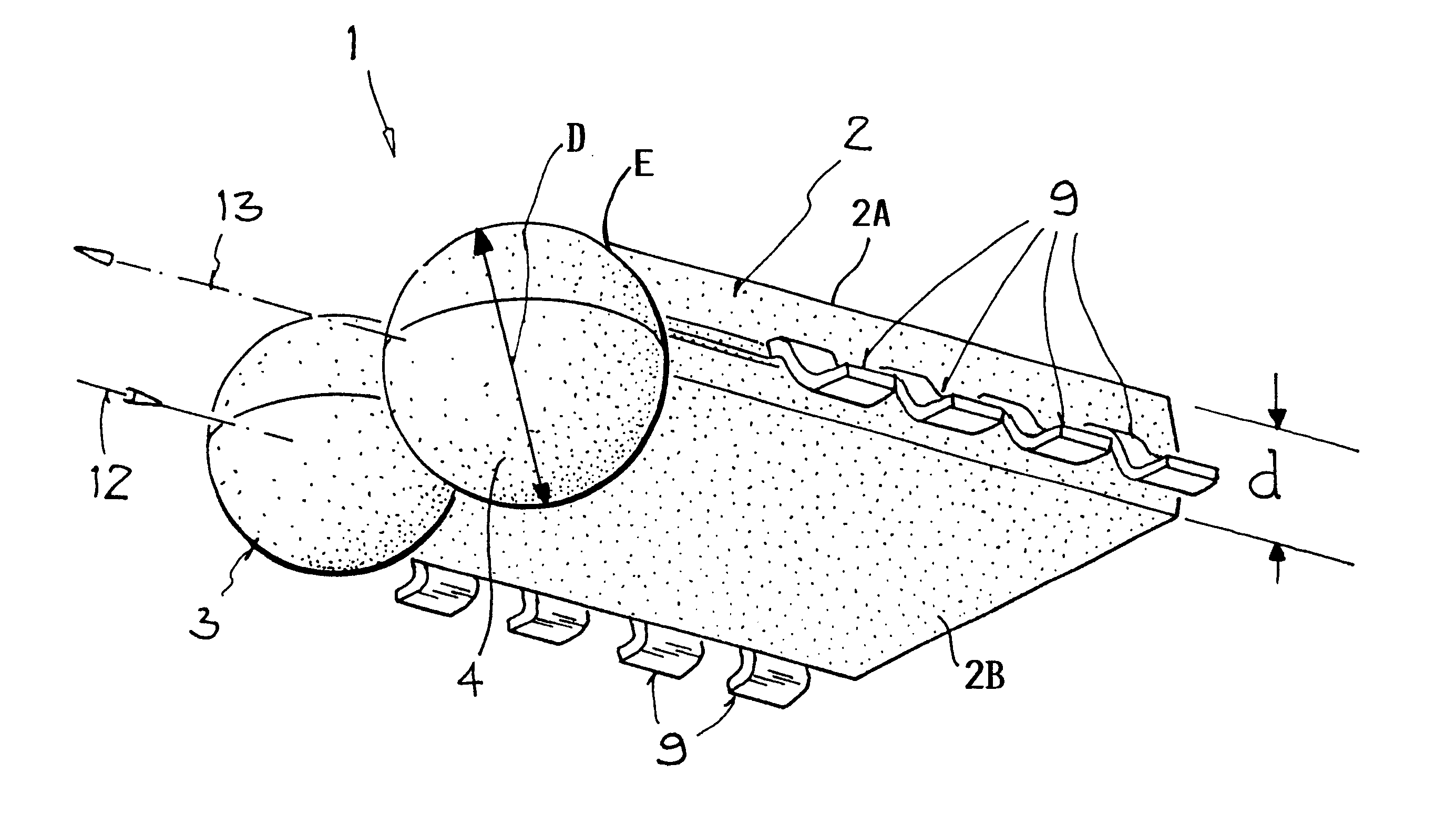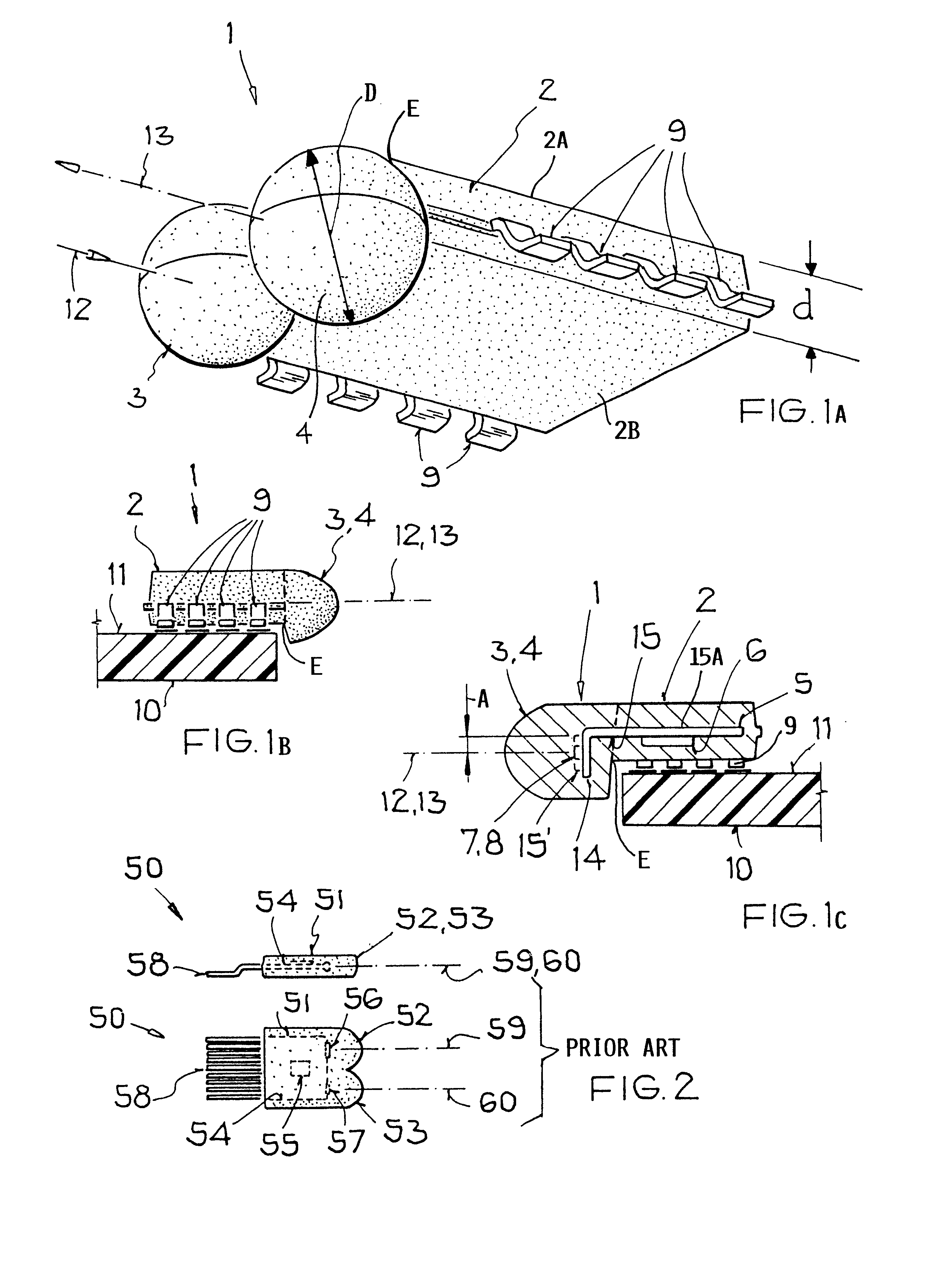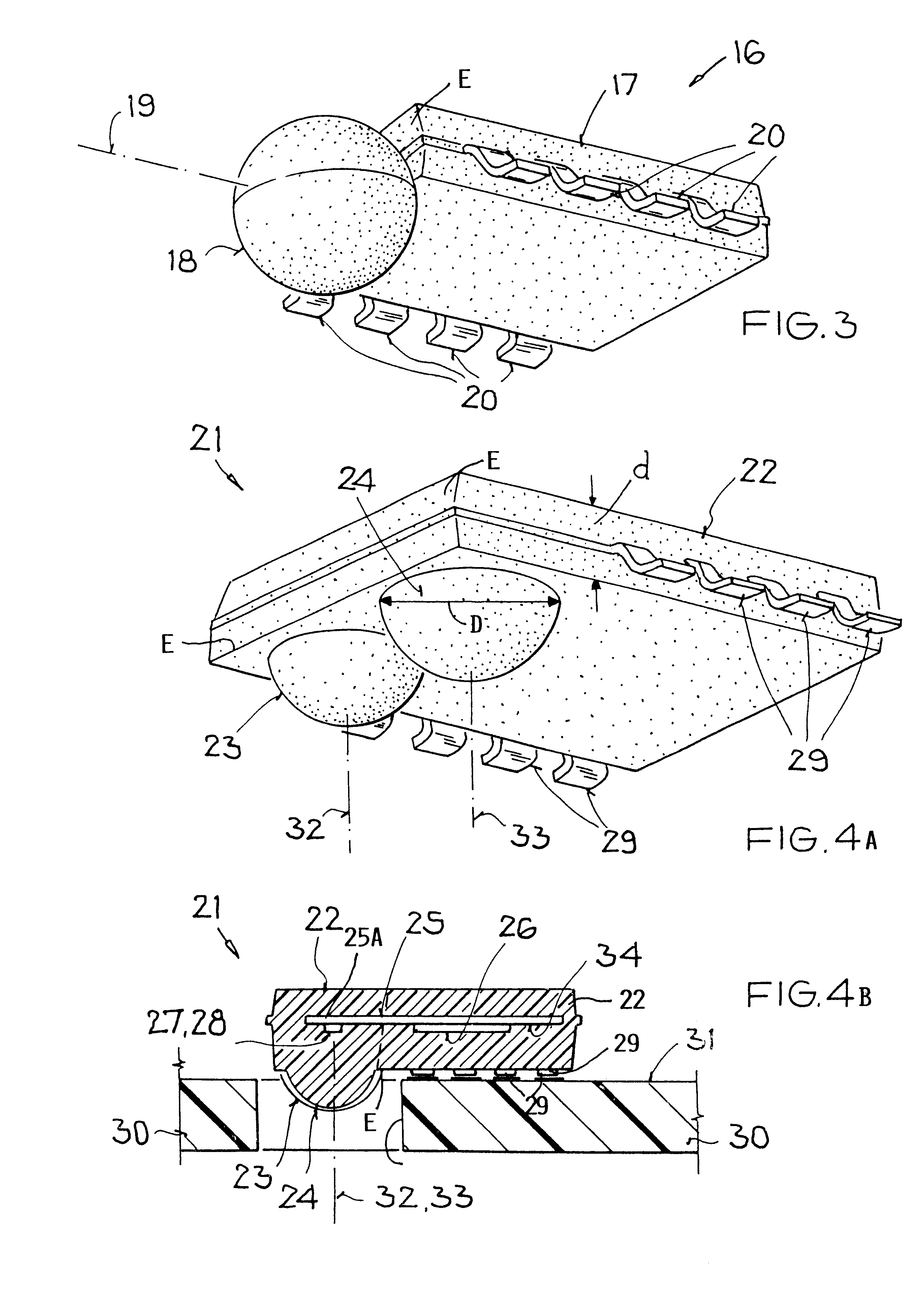Data transmitter/receiver
a data transmitter and receiver technology, applied in transmission systems, fibre transmission, transmission, etc., can solve the problems of noticeably limited transmission range of optical data transmission, low optical transmitting and receiving power, etc., to increase the transmission certainty and transmission range, the effect of large apertures
- Summary
- Abstract
- Description
- Claims
- Application Information
AI Technical Summary
Benefits of technology
Problems solved by technology
Method used
Image
Examples
Embodiment Construction
FIGS. 1A, 1B and 1C illustrate a transceiver 1 for directed, bi-directional, optical, wireless data transmissions by means of electrical and optical data signals. The transceiver is constructed for a side view mode. The transceiver 1 includes an elongated first flat housing section 2 having a parallelepiped shape and at least one second housing section 3, preferably two second housing sections 3 and 4, having a spherical configuration arranged laterally along one side wall or edge E of the flat housing section 2. The flat first section 2 has a thickness d between its parallel surfaces 2A and 2B. The spherical second sections have a diameter D.
The arrangement shown is referred to as a side view mode because the radiation wave energy enters and leaves the transceiver 1 laterally as symbolized by optical, directional axes 12 and 13. The housing section 2 is made of a known potting mass and comprises an electrically conducting strip 5 preferably forming a grid carrier or support or moun...
PUM
 Login to View More
Login to View More Abstract
Description
Claims
Application Information
 Login to View More
Login to View More - R&D
- Intellectual Property
- Life Sciences
- Materials
- Tech Scout
- Unparalleled Data Quality
- Higher Quality Content
- 60% Fewer Hallucinations
Browse by: Latest US Patents, China's latest patents, Technical Efficacy Thesaurus, Application Domain, Technology Topic, Popular Technical Reports.
© 2025 PatSnap. All rights reserved.Legal|Privacy policy|Modern Slavery Act Transparency Statement|Sitemap|About US| Contact US: help@patsnap.com



